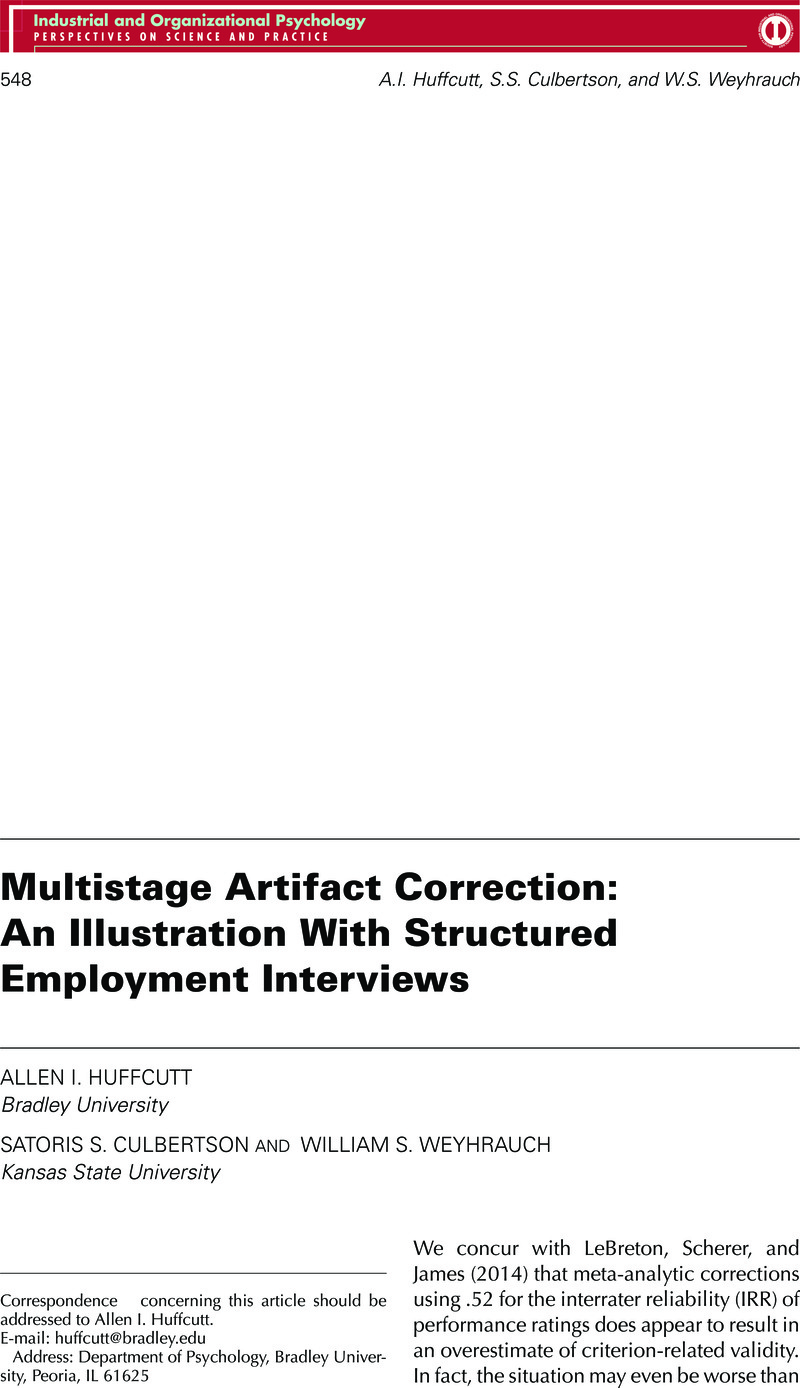Alexander, R. A.,
Carson, K. P.,
Alliger, G. M., &
Carr, L. (
1987).
Correcting doubly truncated correlations: An improved approximation for correcting the bivariate normal correlation when truncation has occurred on both variables.
Educational and Psychological Measurement,
47,
309–
315. doi: 10.1177/0013164487472002
Google Scholar 